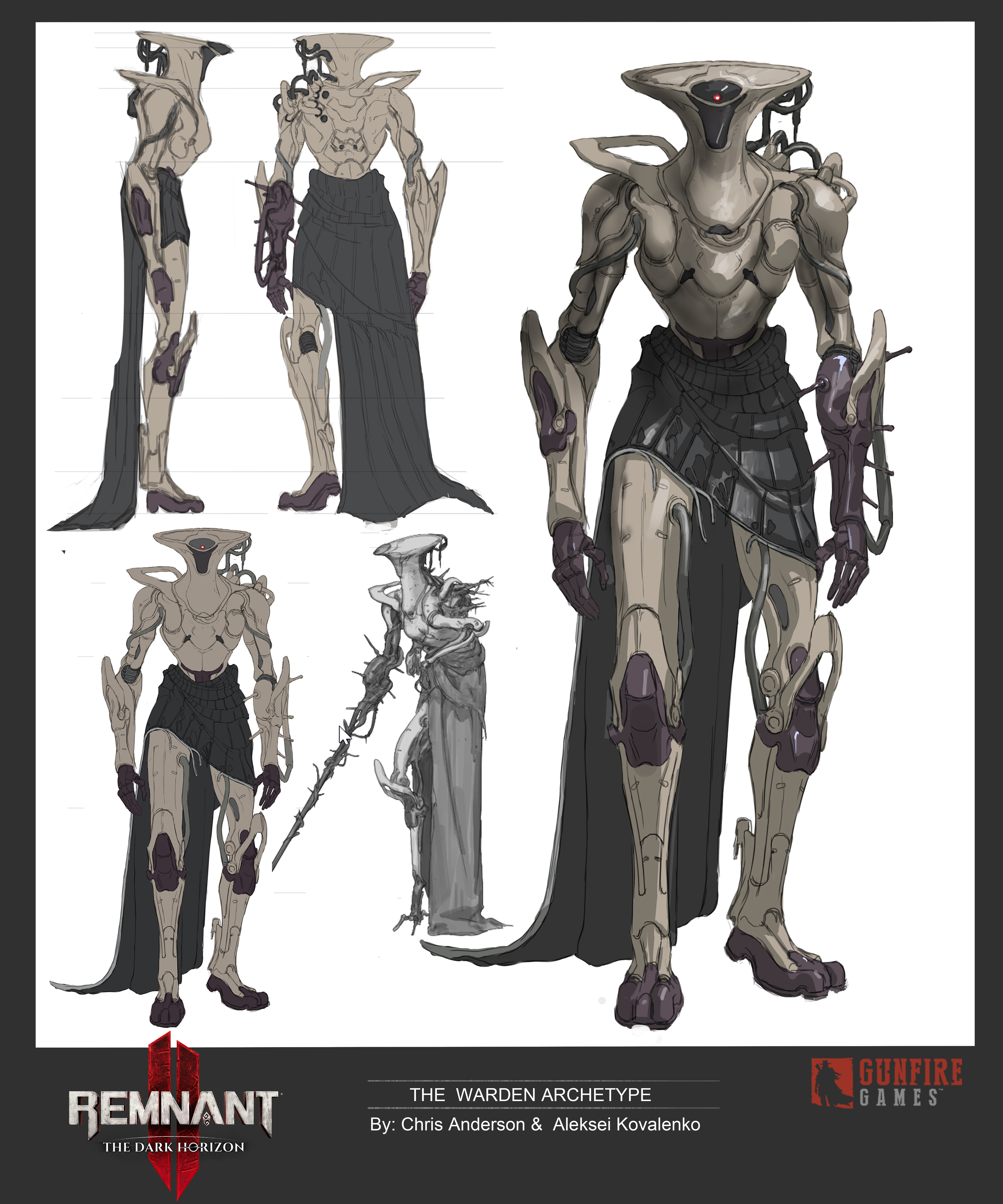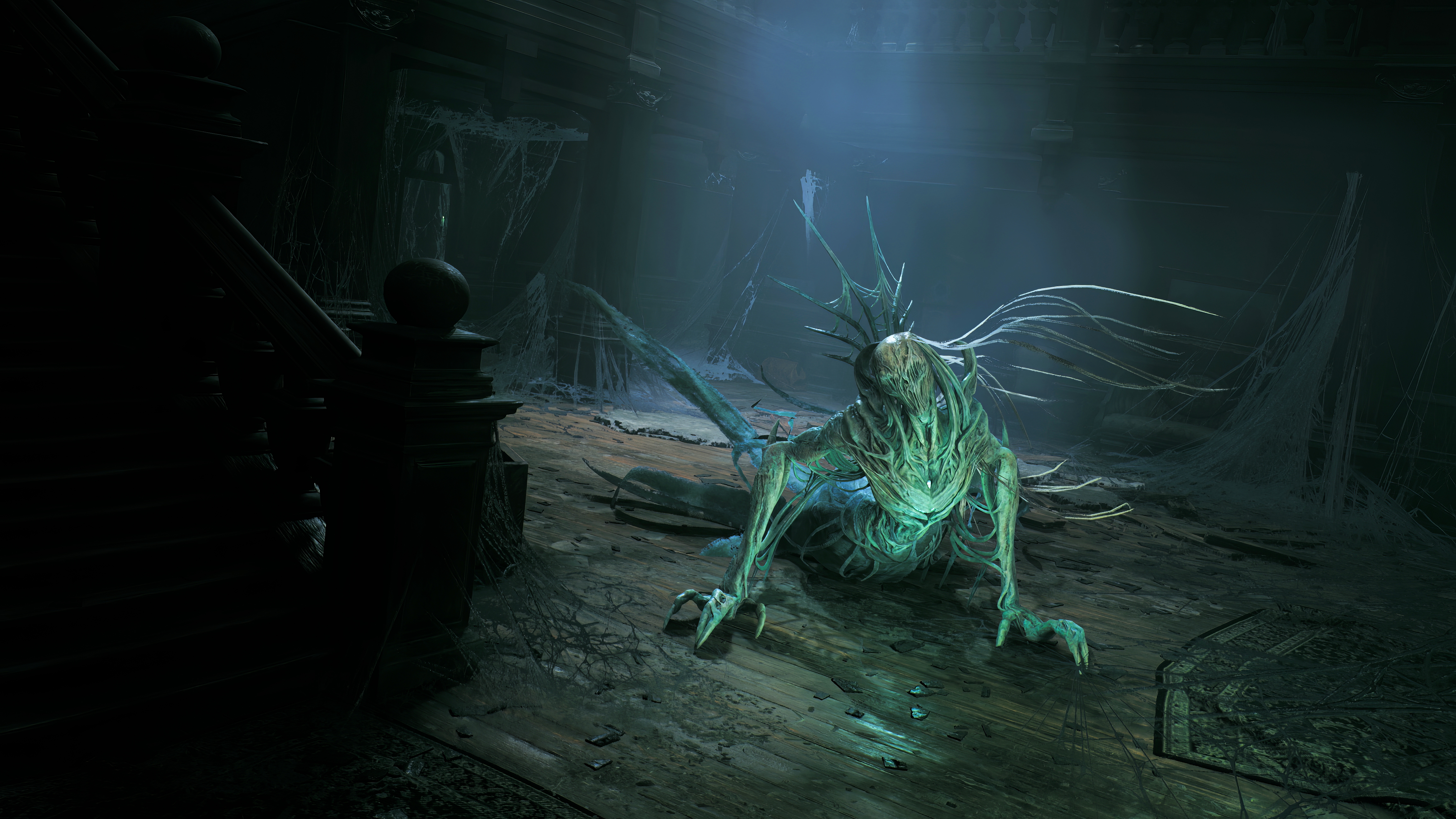1 year and a trio of DLCs later, Remnant 2's devs reflect on development, Resident Evil 4, and making a solid game outside the live service grinder
"We make literally zero decisions based on how much money we're going to make."

Remnant 2's third DLC, The Dark Horizon is out now—and it represents somewhat of a victory lap for Gunfire Games who've made a game I've been a pretty large advocate for. It's felt like a bit of an oasis in a sea of live service speculative tailspins—Gunfire decided to simply release three quite good DLCs in the span of a year at a reasonable price point, with nary a battle pass in sight.
In addition to getting an early peek at The Dark Horizon, I also got to sit down with CEO and game director David Adams, as well as co-founder and development director Ben Gabbard to talk about the history of the game and its design philosophies for its first anniversary.
Initially, Remnant: From the Ashes spawned from a game called Chronos: From the Ashes, a launch title for the Oculus Rift: "Very early on in Gunfire we got a contract with Oculus, and they're like, 'Hey, can you make a launch game for the Oculus Rift?'" Adams tells me. "Originally, you went into this tower, which ended up becoming Ward 16 … you could go through this crystal to go to these other worlds.
"We had a bunch of concepts for, like, the original Remnant pitch at the time, but we just said 'Hey, we'll put it in the Chronos universe.' There wasn't really a strategic decision, Chronos wasn't a well-known IP, I think we just liked the world we created."
That phrasing—"we just liked"—seems to be a common throughline the more I talk to Gabbard and Adams. Remnant 2 had a very solid launch, grabbing over 100,000 concurrents on Steam, and while that number's now a steady, humble tick between 10,000-3,000 players, I'd wager that's mostly down to it being a game you can reasonably finish and be done with.
The more we chat, the more I get the sense that Gunfire's core philosophy is just making a game its devs would like to play, releasing it, and welcoming people back once they've got more stuff to do.
'Dark Souls with guns'

The phrase "Dark Souls with guns" got bandied around a lot when Remnant: From the Ashes came out in 2019, and for a decent reason. Crystals were bonfires, you had a dodge with invincibility frames, enemies would respawn, and so on. However, while soulslikes definitely inspired it, Adams tells me that the base template of Remnant 2 was a lot more Resident Evil 4, as per the game's early prototypes.
Keep up to date with the most important stories and the best deals, as picked by the PC Gamer team.
"The original prototype had more survival game type-elements—like, you didn't refresh your health when you went to the crystal, right? Ammo was a much bigger deal, you didn't refill ammo at the crystal. There was a much bigger emphasis on scraping together supplies and trying to survive and that sort of stuff."
As for how this vision of a survival game warped over time, Adams tells me "it was really just a bunch of little decisions—you're like, hey, let's just refresh your health when you visit a crystal. You make that decision, and at some point someone's like 'well we should just refresh ammo'."

Eventually, Gunfire Games produced something that "became 'Dark Souls with guns', but actually started out being more inspired by Resident Evil 4, which is, like, the original inspiration … I would say that core gameplay didn't change."
When I ask about those additive inspirations—as the DNA of other games like Diablo and Dark Souls is pretty apparent—Adams comments, with refreshing honesty, "I wish I could say it's like, there was some master plan, right? But we're, we're very much driven by what we just think will be fun, or what we would like to play."
It's at this point Gabbard hops in and, jokingly, implores me to "write that in that there was a master plan, we just couldn't tell you that." I can only assume I glimpsed secrets beyond my ken, and was hit with a Men-in-Black style memory eraser stick.
Adams continues: "It really just becomes an amalgamation of all the cool things [we liked], and what I'm proud of at the end of the day is that if you like Remnant, there's not really another game that's like [it]." In the sense that it's the way the series combines its inspirations that sets it apart? That's something I would agree with.
Many worlds (and their theories)

In case you're green to the series, Remnant's entire shtick is that you've been connected to a bunch of other worlds and, generally, that's been a bit of an issue for everyone involved. In Remnant 2, you go to the Dickensian gothic hellscape of Losomn (which has faerie castles in it sometimes), the satyr woodlands of Yaesha, and the Giger-esque sci-fi nightmare of N'Erud.
It surprised me to hear from Adams that these worlds weren't thinned from a herd of multiversal ideas—as a matter of fact, they pretty much nailed them in one: "There actually weren't any worlds designed that we didn't use … I wrote the first two-page document for Losomn, and every single thing in that document, [all of it] made it into the game."
As for why Gunfire Games chose to focus on expanding the three existing worlds with its DLCs, rather than create a new one, Adams is pretty frank on the subject:
"There were a lot of things that went into that … It's frankly way more work to make a whole new world, right? We were committing to do three DLCs in a year, it would have been nearly impossible to do a whole new world in that time frame. So there's just a strategic element of like, 'Okay, realistically, what can we do?'"
Instead, the dev team focused on making the old worlds feel "as fresh as humanly possible". I can say that they've done a solid job in that, at least—having played two (soon to be three) of these DLCs.

The Awakened King is perhaps the most samey, though it does put you on Losomn's dramatic coastline—meanwhile, The Forgotten Kingdom makes genuine strides to shift Yaesha's colour palette and add a newfound sense of verticality to the game. Having seen a bit of The Dark Horizon, it's dramatically aesthetically different from what we've seen of N'Erud thus far, trading out desolate hellscapes for agricultural farms and superstructures.
One thing I've always been impressed by is just how reasonable those DLCs have been. They each run you $10/£8.50, add about 5-8 hours of campaign content, a new Archetype, and a buncha new items, and then ask nothing more from you which, in a market where it feels like every game has to demand your full attention with a battle pass strapped to the underbelly, is genuinely refreshing.
As to why Gunfire Games has opted for this model, Adams flatly states: "I can say very confidently that we make literally zero decisions based on how much money we're going to make … We really do just say hey, let's make the coolest game possible, and hopefully as many people as humanly possible want to play that game."




"It's very hard for me, and this isn't me dissing live services, I can't imagine a scenario, if that's your philosophy, where you're going to be like: Yes, this will legitimately make the game cooler."
Gabbard also adds that, similarly, while he's not trying to "besmirch" live service games: "I think just for us, it's just not something that we could consider, you know, because we don't go into it with that kind of mindset … Trying to establish a new IP we wanted to punch above our weight class in terms of like, hey, not only are you providing an exceptional product, but if you give it at a reasonable price point, you'll attract more people."
Looking back

To wrap things up, ask one of my usual questions when it comes to retrospective interviews like this—namely, if you could send a message back in time yourself while you were making Remnant: From the Ashes, what would your message in a time bottle be?
Once Gabbard tidies away the very reasonable question of whether that'd be limited to game development stuff and not, say, "stock up on toilet paper", Adams tells me: "If you could just go back and say, 'Hey, by the way, the game you're going to make is this', they'd make that game way better the first time, and faster. That's why everybody loves to make a sequel. The sequel is like, cool, now we've stumbled our way into the game we know we're making, we can just make the game without stumbling again, which feels great."
Outside of the logistics stuff, though? "I think if I had to tell myself personally, I would say: 'Don't worry, it's going to be good, and people are going to like it'," to which Gabbard chimes in: "High fives, yeah, that'd relieve a lot of pressure and stress, I'll tell you that." You can play The Dark Horizon now on Steam—alongside a free boss rush update that adds a roguelike mode I'm keen to get stuck into, myself.

Harvey's history with games started when he first begged his parents for a World of Warcraft subscription aged 12, though he's since been cursed with Final Fantasy 14-brain and a huge crush on G'raha Tia. He made his start as a freelancer, writing for websites like Techradar, The Escapist, Dicebreaker, The Gamer, Into the Spine—and of course, PC Gamer. He'll sink his teeth into anything that looks interesting, though he has a soft spot for RPGs, soulslikes, roguelikes, deckbuilders, MMOs, and weird indie titles. He also plays a shelf load of TTRPGs in his offline time. Don't ask him what his favourite system is, he has too many.

